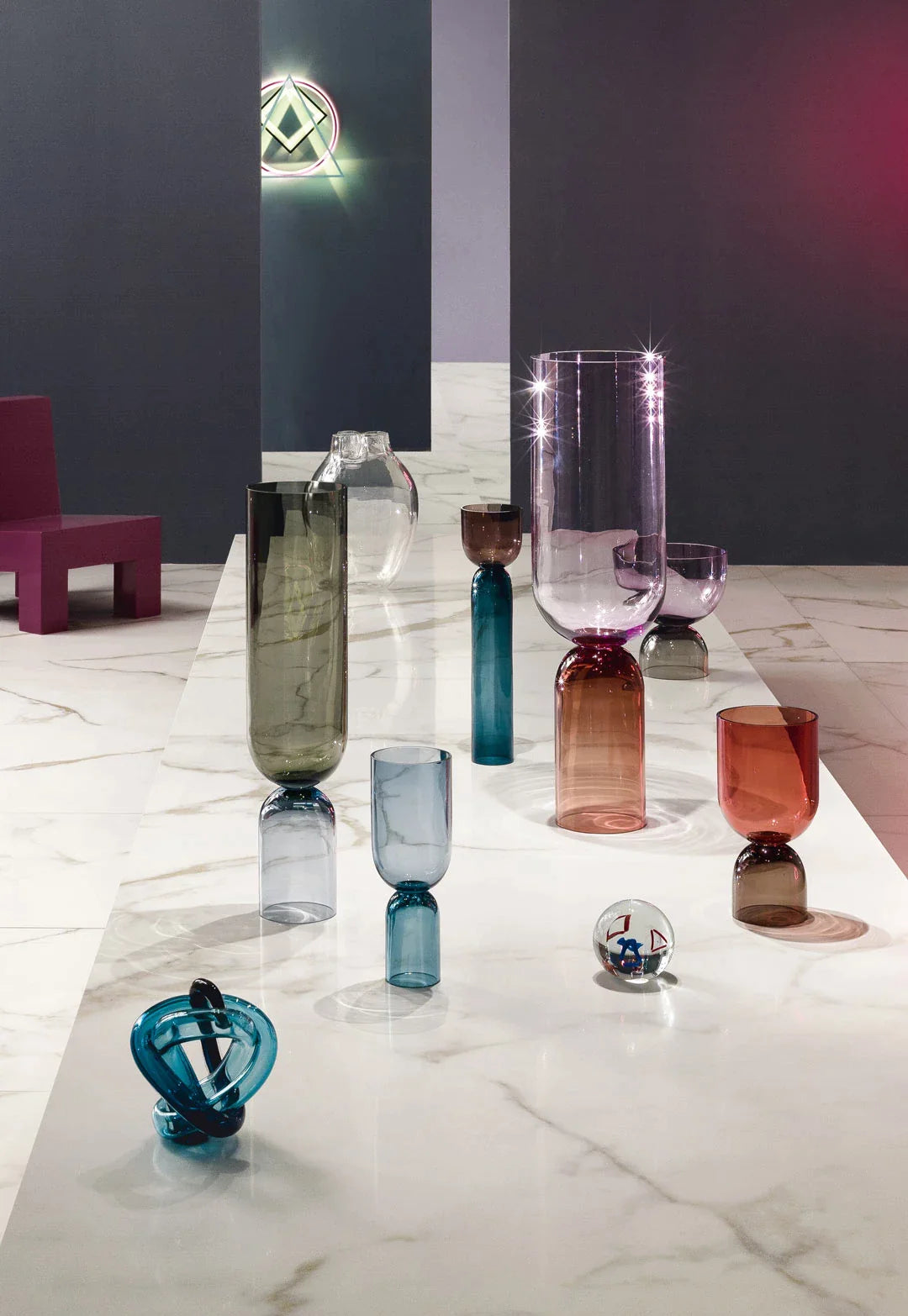
Maximalism vs. Minimalism: Finding Balance in Interior Design
|
|
Time to read 3 min
Written by: Alexa Roland
|
|
Time to read 3 min
In the world of interior design, two contrasting styles have been gaining immense popularity in recent years: maximalism and minimalism. These two design philosophies represent opposite ends of the design spectrum, each with its unique characteristics and appeal. Maximalism is all about embracing bold patterns, vibrant colors, and an abundance of decor, while minimalism adheres to the "less is more" mantra, focusing on simplicity and minimal clutter. In this blog, we will explore the key principles of maximalism and minimalism and help you find the perfect balance between the two for your home.
Maximalism is a design trend that encourages you to embrace the eclectic and express your personality through your interior spaces. It's a celebration of excess, where every corner is adorned with an array of textures, colors, and patterns. Here are some key elements of maximalism:
Bold Colors: Maximalist interiors are known for their vibrant color palettes. Think rich jewel tones, bright reds, deep blues, and striking yellows. The goal is to create a visually stimulating environment.
Pattern Play: Mixing patterns is a hallmark of maximalist design. Stripes, florals, animal prints, and geometric shapes all find a place in this style. The key is to blend patterns harmoniously, creating an exciting visual tapestry.
Eclectic Furnishings: Maximalist spaces are filled with a diverse collection of furnishings. Vintage finds, antique pieces, and contemporary designs all coexist, adding to the richness of the space.
Art and Decor: Artwork and decor items are abundant in maximalist interiors. Wall galleries, sculptures, and decorative objects adorn the walls and surfaces, creating a sense of opulence.
Texture Overload: Maximalism incorporates an array of textures, from plush velvet and silky fabrics to rough wood and metallic accents. The juxtaposition of textures adds depth and interest to the space.
No Empty Spaces: Maximalism leaves no room for empty spaces. Every surface is utilized, and there's a deliberate intention to make every corner captivating.
Minimalism, on the other hand, is a design philosophy that revels in simplicity and minimal clutter. It's about creating serene, uncluttered spaces that exude elegance. Here are some key elements of minimalism:
Neutral Color Palette: Minimalist interiors often feature a neutral color palette, with whites, grays, and earthy tones taking center stage. This creates a calming and timeless atmosphere.
Clean Lines: Minimalist design is characterized by clean, straight lines. Furniture and architectural elements are simple and devoid of ornamentation.
Functional Furnishings: Minimalist furniture prioritizes functionality and practicality. Multi-purpose pieces and hidden storage solutions are common in this style.
Empty Space: In minimalism, empty space is as important as filled space. Negative space is used intentionally to create a sense of openness and tranquility.
Limited Decor: Decor items are carefully selected in minimalistic interiors. Less is more, and each piece is chosen for its significance and impact on the overall design.
Clutter-Free Surfaces: Minimalist spaces are devoid of clutter. Countertops, tables, and shelves are kept clear, emphasizing the beauty of simplicity.
While maximalism and minimalism are seemingly at odds, there's a growing trend in interior design that seeks to strike a balance between the two. This fusion style combines the vibrancy and eclecticism of maximalism with the simplicity and functionality of minimalism. Here's how you can achieve this harmonious blend:
Selective Maximalism: Choose a few areas or elements in your home where you can go all out with maximalist aesthetics. This could be a feature wall, a statement piece of furniture, or a vibrant area rug.
Neutral Backdrop: Maintain a neutral color palette for your walls and larger furnishings. This provides a clean canvas for your maximalist accents to shine.
Quality over Quantity: Instead of filling every nook and cranny with decor, opt for a few high-quality, impactful pieces. This keeps clutter at bay while adding a maximalist touch.
Balance of Textures: Mix textures thoughtfully. Incorporate a variety of textures in your furnishings and decor, but avoid overwhelming the space.
Functional Maximalism: Choose maximalist pieces that serve a purpose. For example, a bold, patterned sofa can be the focal point of your living room while providing comfortable seating.
In the world of interior design, the choice between maximalism and minimalism ultimately depends on your personal preferences and lifestyle. Maximalism offers a vibrant and eclectic escape from the ordinary, while minimalism provides a sense of serenity and order. However, finding a balance between these two design philosophies can result in a space that is both visually captivating and harmoniously functional. Whether you lean towards maximalism or minimalism, remember that your home should reflect your unique style and bring you joy every day. So, feel free to experiment, mix and match, and create a space that truly feels like your own.
We seek out brands that are looking to the future of design. The kinds that collaborate with the greatest design minds of our time. Family-run brands founded over half a century ago to newer brands bristling with enthusiasm. Big brand names you recognize, like B&B Italia, Moroso and Molteni & C.
Whether searching for a single light fixture, or undertaking a complete house makeover - enhance your urban space with over one hundred of the world's best furniture lines, with one stop shopping at Urbanspace Interiors.
Our in house team of design experts is here to help you refinish, redefine, and reinvigorate your urban space - whether it's a single room, a full house, or an entire downtown condo tower.









